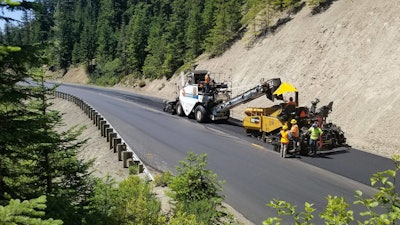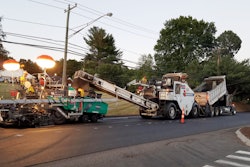
If you haven't seen a laundry list of projects ready to get started as a result of Biden signing the Infrastructure Investment & Jobs Act (IIJA) in to law, that's by design. The IIJA was crafted to deliver generational transportation investments but nearly 90 percent of the resources for roads and bridges will distributed by formula directly to the states, putting them in control of the projects to work on.
States, perhaps are busy dusting off those much-needed projects for which they had no funding, and figuring out how apply for their cut of the $550 billion in total new spending. The Federal Highway Administration (FHWA) knows that implementing this law will be no easy task and has designed a website to help manage the new bill.
“FHWA is committed to providing easily accessible information on the Bipartisan Infrastructure Law as the first of many steps we’re taking to deliver the largest transportation investment in generations,” said Deputy Federal Highway Administrator Stephanie Pollack. “As this website is expanded and updated it will be a great asset for states, counties, cities, towns and Tribes seeking funding from both formula and grant programs to modernize their infrastructure, improve safety and create good paying jobs.”
The new website, at https://www.fhwa.dot.gov/bipartisan-infrastructure-law, will serve as a one-stop shop online for transportation agencies and others interested in learning more about new and existing FHWA programs as well as how to apply for grants and other discretionary funding opportunities available under the Bipartisan Infrastructure Law.
Highway Highlights
It's not secret our roads are in desperate need of attention and the IIJA was designed to help. The bill:
- Funds highway programs for five years (FY 22-26)
- Gives $350.8 B (FY 22-26) for highway programs
- $303.5 B in Contract Authority (CA) from the Highway Trust Fund (HTF)
- $47.3 B in advance appropriations from the General Fund (GF)
- $90 B transfer from the General Fund to the HTF to keep the HTF Highway Account solvent for years
The bill also features more than a dozen new highway programs, including:
- Formula: resilience, carbon reduction, bridges and electric vehicle (EV) charging infrastructure
- Discretionary: bridges, EV charging infrastructure, rural projects, resilience, wildlife crossings, and reconnecting communities
What this means is there are more opportunities for local governments and other non-traditional entities to access new funding through these programs. To help get the most out of these programs, the FHWA is also issuing a Request for Information (RFI) to solicit suggestions from the public and stakeholders on how best to facilitate FHWA’s implementation of the Bipartisan Infrastructure Law. As the RFI states, “In order to make the most of the BIL’s historic investment and opportunities, FHWA is seeking your input on the FHWA-related sections” of the Bipartisan Infrastructure Law.
“The Bipartisan Infrastructure Law can improve infrastructure, the environment, equity and the quality of life for millions of Americans, but to realize its full potential we need to hear from the public, especially on how FHWA should address the opportunities and challenges associated with both changes to existing programs and the creation of new programs,” Pollack added.
The RFI, slated to be published in the Federal Register on December 1, can be viewed at 2021-26145.pdf (federalregister.gov). Specifics on Bipartisan Infrastructure Law programs and funds being made available by the USDOT to each state and the District of Columbia can be found at https://www.transportation.gov/briefing-room/usdot-releases-state-state-fact-sheets-highlighting-benefits-bipartisan



















